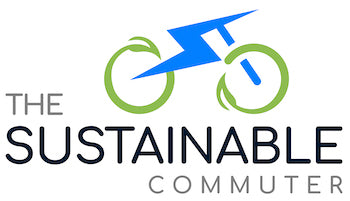
Determining Safe Energy Levels for Sustainable Transportation
Share
Sustainable transportation refers to the use of transportation systems and methods that have minimal impact on the environment and promote long-term ecological balance. It involves reducing greenhouse gas emissions, conserving energy, and promoting the use of renewable energy sources. Determining safe energy levels is crucial in ensuring sustainable transportation, as it helps to minimize negative environmental impacts and promotes the efficient use of resources.
Reducing Carbon Emissions
One of the key aspects of sustainable transportation is reducing carbon emissions. This can be achieved by transitioning from traditional fossil fuel-based vehicles to those that run on renewable energy sources. Renewable energy sources such as solar, wind, and hydroelectric power offer a cleaner and more sustainable alternative to fossil fuels.
Electric vehicles (EVs): have gained significant attention in recent years as a viable solution for reducing carbon emissions in the transportation sector. Unlike conventional vehicles that run on gasoline or diesel, EVs are powered by electricity, which can be generated from renewable energy sources. By switching to EVs, we can significantly reduce greenhouse gas emissions and decrease our dependence on fossil fuels.
In addition to reducing carbon emissions, EVs offer several other benefits. They have lower operating costs compared to traditional vehicles, as electricity is generally cheaper than gasoline or diesel. EVs also have fewer moving parts, resulting in reduced maintenance and repair costs. Furthermore, EVs are quieter and produce less noise pollution, enhancing the overall quality of life in urban areas.
Ensuring Sustainability
To ensure the sustainability of transportation systems, it is essential to focus not only on the type of energy used but also on the efficiency of energy consumption. Strategies for increasing energy efficiency include improving vehicle aerodynamics, reducing vehicle weight, implementing advanced engine technologies, and optimizing traffic management systems.
Improving vehicle aerodynamics: can significantly reduce fuel consumption. By designing vehicles with sleek and streamlined shapes, air resistance can be minimized, resulting in improved fuel efficiency. Reducing vehicle weight is another effective way to increase energy efficiency. Lighter vehicles require less energy to accelerate and maintain speed, leading to reduced fuel consumption.
Advanced engine technologies: such as hybrid drivetrains and regenerative braking systems, can also enhance energy efficiency in transportation. Hybrid vehicles combine an internal combustion engine with an electric motor, allowing for improved fuel economy. Regenerative braking systems capture and store energy that is typically lost during braking, which can then be used to power the vehicle.
Optimizing traffic management systems: can also contribute to energy efficiency in transportation. By utilizing intelligent transportation systems (ITS) and implementing efficient traffic flow strategies, such as synchronized traffic signals and real-time traffic information, congestion can be minimized, resulting in reduced fuel consumption and emissions.
Financial Incentives
In addition to implementing strategies for increasing energy efficiency, financial incentives can play a crucial role in promoting sustainable transportation. Governments and organizations around the world are offering various incentives to encourage the adoption of renewable energy sources and the use of electric vehicles.
For example, many countries provide tax credits or rebates for purchasing EVs, making them more affordable for consumers. Some governments also offer grants or subsidies for installing renewable energy systems, such as solar panels, which can be used to charge EVs. These financial incentives make sustainable transportation more accessible and attractive to the general public.
Furthermore, some utility companies offer special electricity rates for EV owners, providing further cost savings. By charging their vehicles during off-peak hours, EV owners can take advantage of lower electricity rates, reducing their overall energy costs.
Conclusion
Determining safe energy levels is crucial for achieving sustainable transportation. By reducing carbon emissions and promoting the use of renewable energy sources, we can minimize the negative environmental impacts of transportation. Additionally, implementing strategies for increasing energy efficiency and providing financial incentives can further encourage the adoption of sustainable transportation practices.
The benefits of safe energy levels for sustainable transportation are numerous. They include reduced greenhouse gas emissions, improved air quality, decreased dependence on fossil fuels, and lower operating costs. Sustainable transportation not only benefits the environment but also enhances the overall quality of life for individuals and communities.
To promote sustainable transportation, it is important to support and engage with organizations and companies that prioritize sustainability. Look for companies that are committed to reducing their carbon footprint, investing in renewable energy, and promoting green transportation options. By supporting sustainable organizations and making conscious choices in our own transportation habits, we can contribute to a more sustainable future.
